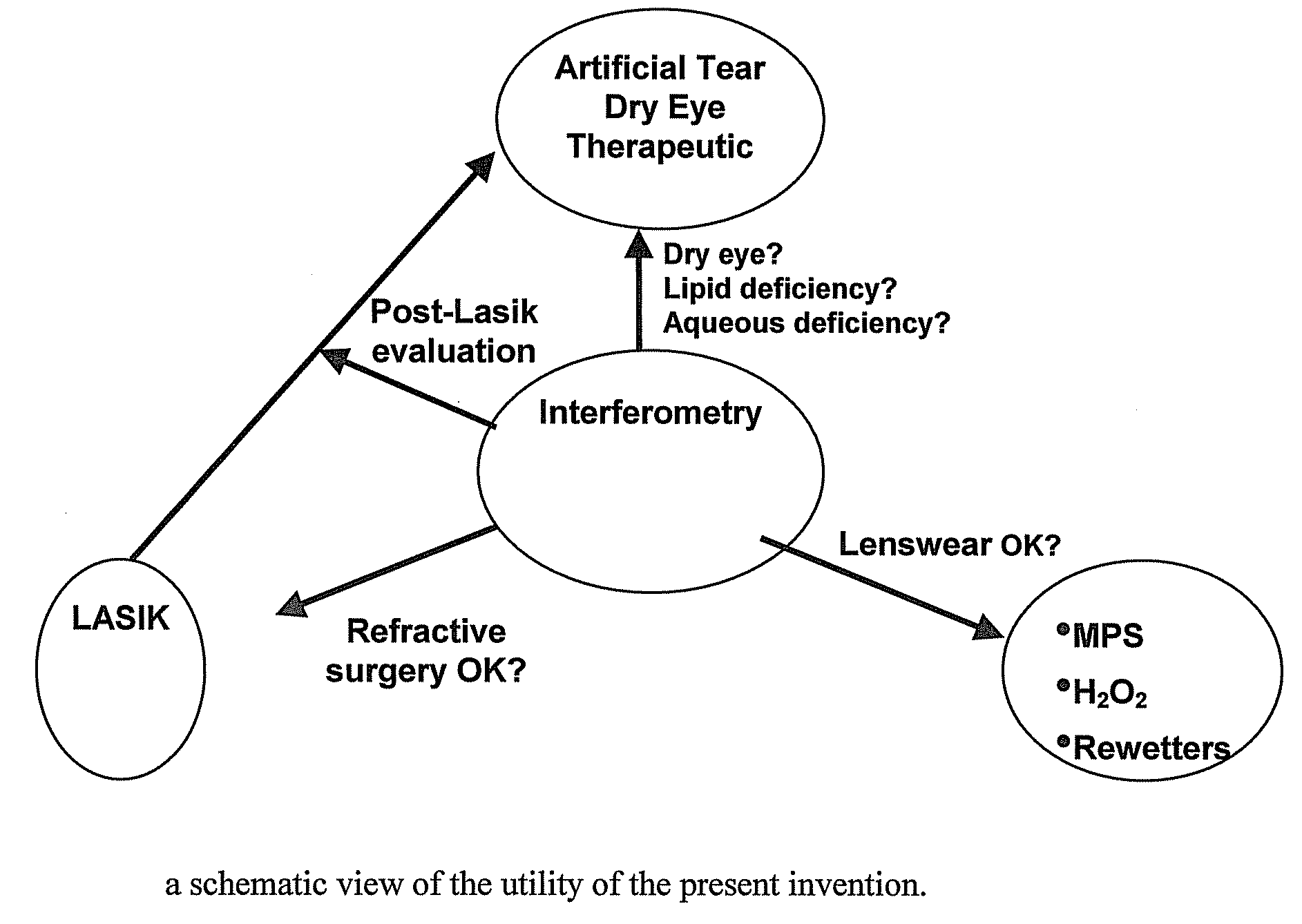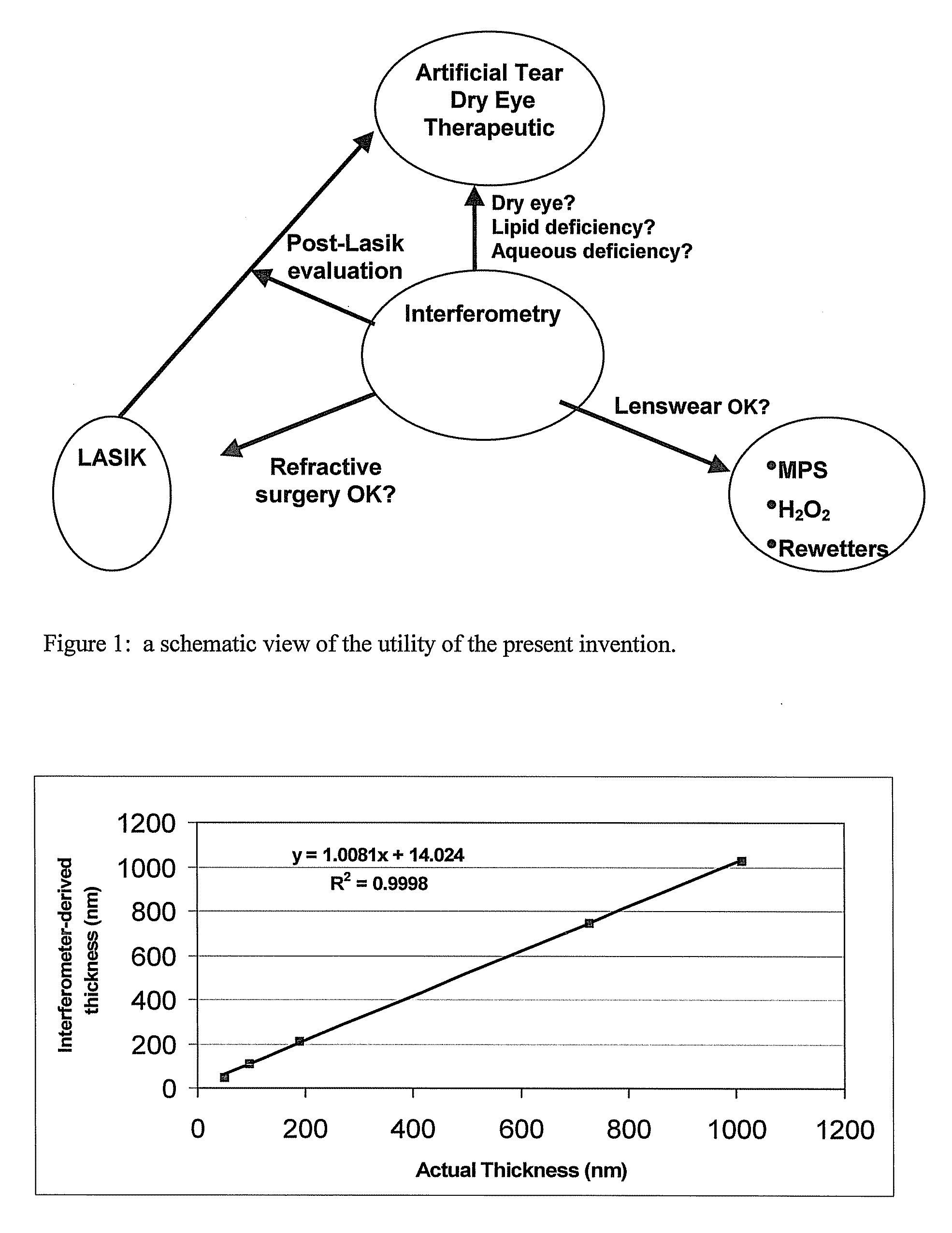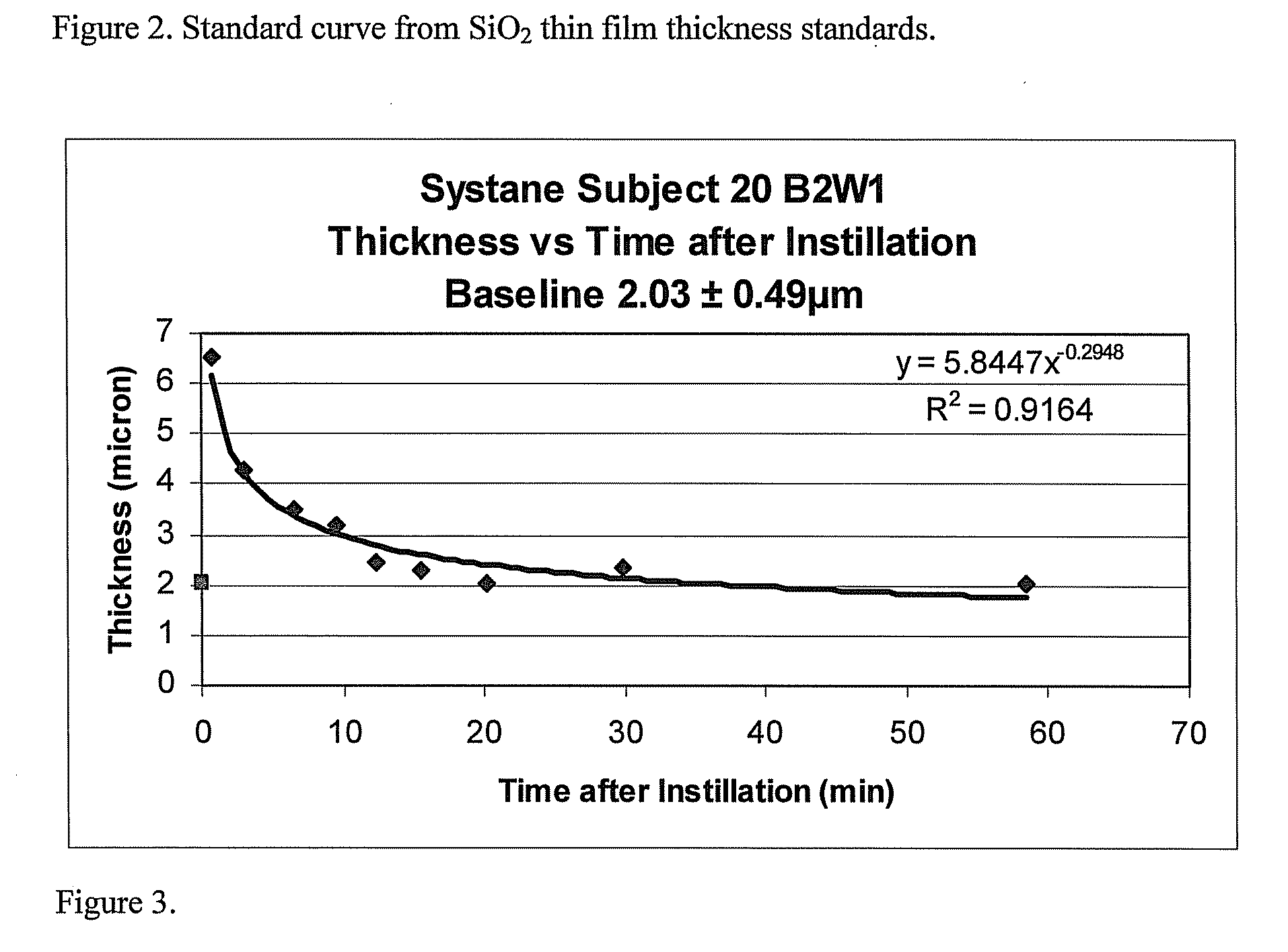Methods and devices for measuring tear film and diagnosing tear disorders
a technology of tear film and tear disorder, applied in the field of methods and devices for measuring tear film and diagnosing tear disorders, can solve the problems of unsuitable contact lens wear for individuals with moderate to severe dry eye, patients with autoimmune diseases, and computer users who are particularly susceptible to developing dry ey
- Summary
- Abstract
- Description
- Claims
- Application Information
AI Technical Summary
Problems solved by technology
Method used
Image
Examples
example 1
[0080]In this example, the combined aqueous+lipid layers tear film thickness was measured in the right eye of a subject (Subj 20, B2W1) prior to the application of Systane drops. The aqueous+lipid layers combined thickness was measured with a wavelength-dependent optical interferometer of the type disclosed in King-Smith, P E et al. The Thickness of the Human Precorneal Tear Film: Evidence from Reflection Spectra. Invest. Opthalmol. Vis. Sci. 2000 October; 41(11): 3348-3359, which is incorporated herein by reference in its entirety. 50 measurements were taken of the tear film at a 12.5×133 um spot at the apex of the cornea, each 504 msec, over a 25.2 second interval, to yield a baseline pre-eye drop combined aqueous+lipid layers tear film thickness of 2.03±0.49 microns. Thereafter, a single 40 uL drop of Systane drops, lot 62314F, exp 11 / 07 (Alcon Laboratories, Fort Worth, Tex.), was instilled into the right eye of the same subject and the combined aqueous+lipid layers thickness was...
example 2
[0081]In this example, the combined aqueous+lipid layers tear film thickness was measured in the right eye of a subject (Subj 12, B2W1) prior to the application of Systane drops. The aqueous+lipid layers combined thickness was measured using the instrument of example 1, to yield a baseline pre-eye drop combined aqueous+lipid layers tear film thickness of 2.99±0.15 microns. Thereafter, a single 40 uL drop of Alcon® Systane drops, lot 62314F, exp 11 / 07 (Fort Worth, Tex.), was instilled into the right eye of the same subject and the combined aqueous+lipid layers thickness was measured several times over a period of 1 hour, as indicated in Table 1.
TABLE 1time, min00.882.755.929.0712.8715.0519.9331.1260.55thickness,2.9910.215.033.352.752.592.482.252.271.96micronsstd dev,0.150.530.290.240.170.190.160.230.170.22micronsrtbaselinep p p p p p
[0082]T-test statistical comparisons were calculated between the baseline thickness and the thickness values at 9.07 minutes and thereafter. A significa...
example 3
[0084]In this example, the combined aqueous+lipid layers tear film thickness was measured in the right eye of a subject (Subj 20, B1W1) prior to the application of a commercially available eye drop, Blink® tears lubricating eye drops (Advanced Medical Optics, Inc., Santa Ana, Calif.). The aqueous+lipid layers combined thickness was measured using the instrument of example 1, to yield a baseline pre-eye drop combined aqueous+lipid layers tear film thickness of 1.89±0.24 microns. Thereafter, a single 40 uL drop of Blink® tears, was instilled into the right eye of the same subject and the combined aqueous+lipid layers thickness was measured several times over a period of 1 hour. It can be seen in FIG. 5 that the instillation of Blink® Tears thickened the tear film over a period of time. Again, although general thickening of the tear film following topical application of an ophthalmic formula is conventionally expected from the prior art, it is surprising that measurement of tear film t...
PUM
 Login to View More
Login to View More Abstract
Description
Claims
Application Information
 Login to View More
Login to View More - R&D
- Intellectual Property
- Life Sciences
- Materials
- Tech Scout
- Unparalleled Data Quality
- Higher Quality Content
- 60% Fewer Hallucinations
Browse by: Latest US Patents, China's latest patents, Technical Efficacy Thesaurus, Application Domain, Technology Topic, Popular Technical Reports.
© 2025 PatSnap. All rights reserved.Legal|Privacy policy|Modern Slavery Act Transparency Statement|Sitemap|About US| Contact US: help@patsnap.com



